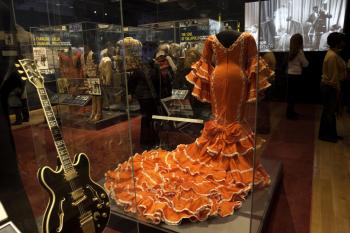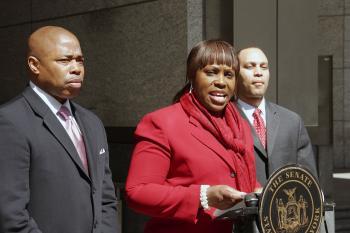Apollo Theater in the Spotlight at Museum of the City of New York
Once again, Harlem’s legendary Apollo Theater is in the spotlight—but of a different kind.

LUCILLE: Bluesman B.B. King's famous guitar, Lucille, and a dress of Spanish Harlem on display at the Museum of the City of New York's exhibition of the history of the Apollo Theater 'Nothing Like the Real Thing.' Phoebe Zheng/The Epoch Times
|Updated:





